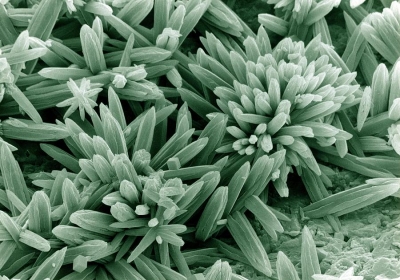
People who live in parts of the country founded on limestone rock, and who have local water piped into their homes, end up with some of the rock their kettles.
When rainwater percolates through a landscape that contains a lot of calcium, it slowly dissolves away some of the mineral. When the water is boiled, this comes out of the solution and sticks to the sides of the kettle as like scale, or kettle fur.
Water that is laden with either calcium or magnesium from the soil, he is described as hard. You cannot get much of a lather when you wash in it with soap. Instead of lathering, the water reacts with the soap chemicals to form an insoluble scum.
Lime scale stains also occur on baths and lavatories and around the outlets of taps.
The limescale can be removed with proprietary descalers. A common type uses a concentrated solution of formic acid.
The acid dissolves the lime scale, making it fizz as carbon dioxide gas comes off.
The lack of a good lather in hard water is less of a problem than it used to be because modern detergents for no scum.
In some boilers and hot water systems hardness can be more than a nuisance. The limescale clogs up pipes and reduces the water flow. In boilers the scale forms a barrier that prevents the efficiency transfer of the heat, leading to much higher heating bills. So, particularly in industrial plants, water needs to be softened before it enters hot water systems.
Many waterworks remove hardness by chemical methods, such as treatment with slaked lime and soda ash, before pumping the water to houses and factories.
Picture Credit : Google

